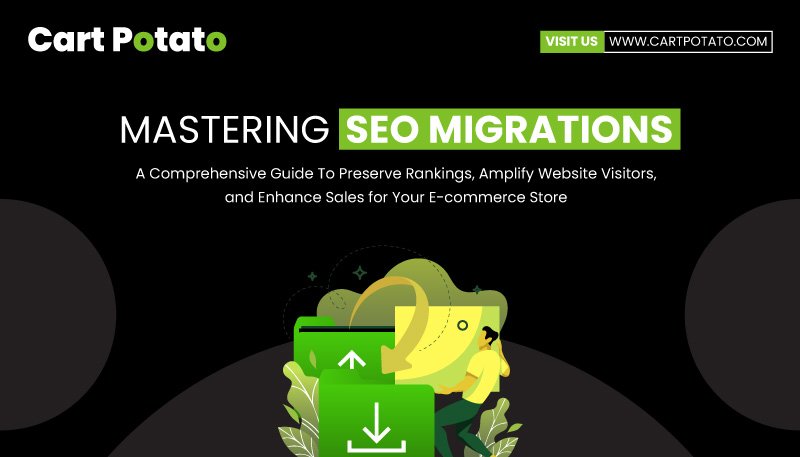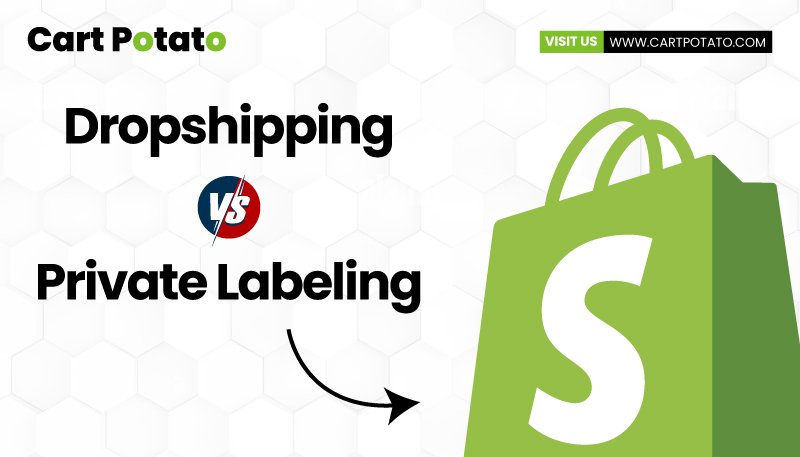
Mastering SEO Migrations: A Comprehensive Guide To Preserve Rankings, Amplify Website Visitors, and Enhance Sales for Your E-commerce Store
In the dynamic realm of e-commerce, staying ahead of the curve is paramount. One of the most strategic maneuvers for online businesses today is the art of SEO migration. It’s not merely a technical transition; it’s a vital step to preserve and enhance SEO performance while making substantial changes to your website.
This blog unveils the intricate process of website SEO migration, shedding light on its significance and the critical steps involved.
Join us on this journey through the digital landscape and unlock the secrets of SEO migration for ecommerce excellence.
Understanding Website SEO Migration
A website SEO migration is the strategic process of transferring a website from one platform to another or making significant structural changes while preserving its SEO performance. This is a common practice among ecommerce merchants, especially when migrating to platforms like Shopify Plus from other ecommerce systems.
Reasons for an SEO Site Migration
Outdated Ecommerce Platform
Many ecommerce brands decide to migrate their websites when their current platform is no longer suitable. Outdated, slow, or inefficient software that struggles to handle increasing traffic and evolving business needs can be a compelling reason to initiate a migration. In such cases, maintaining website performance is paramount.
Site Structure Modification
Sometimes, the site’s navigation structure becomes convoluted for both users and search engines, resulting in problems. In these situations, an SEO migration is essential to preserve the organic rankings of legacy pages and ensure a seamless user experience.
Domain Migration
Ecommerce brands may start with a domain variation of their brand name, such as try(brand).com or use(brand).com. Once the brand’s concept is validated, they might invest in a new, shorter domain (brand.com). Domain migration can also occur to enhance security and streamline business processes.
Potential Risks of an SEO Migration
Loss of Organic Traffic
Search engines frequently crawl websites, indexing pages, and taking into account metrics like traffic, page speed, and bounce rates when determining rankings. Any alterations made to a website between crawls can influence these rankings. Risks include changing on-page content without notifying search engines about the relocation of internal links and unintentionally losing outdated pages.
Poor User Experience
Customers expect seamless shopping experiences online. Encountering duplicate content or broken links upon landing on an ecommerce site can erode trust and satisfaction.
Reduced Conversion Rates
Negative user experiences often lead to lower conversion rates. Issues like 404 errors and duplicate content can reduce trust, contributing to cart abandonment. Research shows that 18% of online shopping carts are abandoned because of a lack of trust in the website’s security, while another 13% are abandoned due to site crashes or errors.
Efficiently planning and executing an SEO migration is vital to mitigate these risks and ensure a seamless transition while maintaining or even enhancing SEO performance.
Website SEO Migration Checklist: Ensuring a Smooth Transition
The process of migrating your website while preserving its SEO performance can be intricate. To facilitate a seamless transition, consider the following checklist:
Safeguard Your Previous Site and Metrics by taking backups
When you’re in the process of making substantial changes to your website, it’s crucial to ensure you have a safety net. This involves creating backups of your old website and establishing a staging site for implementing new alterations. In case any issues arise, having the capability to revert to your previous version is essential. It’s worth noting that search engine crawlers won’t index the pages on your testing site’s URL until they’re live.
Additionally, don’t forget to back up your performance metrics and data. It has been recommended to document your site’s current status, including rankings and traffic levels, to serve as a benchmark for the migration process. Keeping a record of pre-migration benchmarks simplifies the task of evaluating performance, particularly regarding any fluctuations in organic traffic that might occur in the days and weeks following the launch.
Identify and Rectify 404 Errors
When undertaking a replat forming effort, it presents an excellent opportunity to uncover and address 404 errors on your site, which may include old internal links that were overlooked in your redirection strategy.
Commonly referred to as broken links, 404 errors are akin to virtual dead ends. Visitors encountering these dead pages experience disruptions in their shopping journey. They may navigate back to your homepage, click the back button, or manually search for the desired product.
Specialized SEO tools like Screaming Frog can be utilized to crawl your ecommerce website and pinpoint these broken links. If you come across a URL that hasn’t been appropriately relocated, establish a redirection within your website’s backend. This ensures that anyone landing on a broken link is seamlessly directed to the next most relevant page.
Evaluate Existing Pages
Extensive e-commerce websites frequently comprise a multitude of pages. Instead of transferring all of them to your new site, it’s prudent to conduct a comprehensive audit of your existing pages and identify those that serve as dead weight. These are the URLs with poor rankings and minimal organic traffic.
Emphasizes the importance of distinguishing the essential pages you wish to retain from those that should be discarded. In many instances, there are pages that contribute little to no traffic and can be deprecated while being redirected to more valuable pages.
Not only does the removal of these redundant pages simplify your website migration, but it can also lead to enhanced SEO performance. Search engines, such as Google, place a premium on websites with high-quality content. By eliminating URLs with low traffic and ranking, you improve the overall content quality on your domain.
Focus on a Targeted Website Migration Strategy
During an SEO migration, it’s common for many e-commerce businesses to view it as an opportunity to overhaul their entire website. However, for a smoother process and more precise evaluation of changes, it’s advisable to adopt a step-by-step approach. For instance, if you’re transitioning to a new e-commerce platform, consider maintaining consistency in elements like website design, content, domain name, and metadata.
Making too many changes during the migration can obscure the reasons behind shifts in data. Emphasize the importance of retaining the status quo during migration and implementing content strategy changes only after the migration is complete and you have a benchmark on your new platform. This approach helps maintain a clear baseline for performance measurement and simplifies the task of pinpointing any issues that may arise during the migration process.
Submit Your Sitemap and Monitor Analytics
After your migration is complete, promptly submit a fresh XML sitemap via Google Search Console. This action expedites the indexing of your new website, aiding in the discovery of any overlooked SEO errors during the migration process.
It’s essential to ensure that your website is accurately configured in both Google Analytics and Google Tag Manager to enable seamless data tracking. Take advantage of Google Analytics’ real-time analytics report to monitor your site’s incoming traffic.
The precise collection of data is paramount for gaining a clear understanding of your site traffic, audience demographics, and customer journey following the migration. This meticulous setup helps swiftly identify any site performance issues that may have arisen during the migration, including 404 error pages, which can be promptly detected and redirected to enhance the user experience.
If you observe a temporary decline in organic traffic, don’t panic; this is a common occurrence as Google re-crawls and reevaluates your site. Utilize Google Search Console to monitor Google’s crawling and indexing of your pages and to identify and rectify any errors swiftly.
While organic traffic may initially dip, it should gradually recover and may even surpass your prior records. Maintain a watchful eye on the organic traffic, particularly on key pages like your homepage, to confirm the transfer of authority to your new site.
Monitor your site’s post-migration rankings and employ tools such as SEMrush to track keyword performance and compare it against competitors. This proactive approach allows for the early detection and resolution of potential site issues, preventing a substantial drop in traffic.
Implement Precise Redirect Mapping
When switching ecommerce platforms, it’s rare to maintain the exact same URL structure across your site. Different platforms, such as Shopify, employ distinct URL structures for product and category pages.
Redirects play a pivotal role in ensuring that visitors can still access the same content via new URLs while simultaneously guiding search engines to these new URLs and verifying the legitimacy of the content.
It’s advisable to focus on one-to-one redirection rather than many-to-one. For instance, instead of redirecting 100 product URLs to a single collection page, invest the effort in mapping each product URL to its corresponding new URL. This meticulous approach will contribute to a smoother migration and help maintain traffic levels.
Optimize for Mobile and Speed
Google gives priority to a website’s mobile version for ranking in search results through a practice known as mobile-first indexing. This approach utilizes the mobile rendition of a page to index and rank content, thereby enhancing the user’s search experience.
Mobile Optimization
- Ensuring your website is mobile-friendly is essential for a superior user experience.
- Employ accelerated mobile pages (AMP), an open-source initiative sponsored by Google. AMP allows mobile web content to load almost instantly. To comply with AMP standards, certain elements commonly used in ecommerce, such as advertising tags and JavaScript, may need to be disabled. On platforms like Shopify, AMP can be effectively implemented, either directly or through a progressive web app (PWA).
Streamline Tag Tracking
- Websites collect small pieces of data each time a page loads in a user’s browser. Utilize a tag management system like Google Tag Manager to consolidate these JavaScript requests. This not only enhances user experience but also speeds up page loading times.
Minimize Mobile Pop-Ups
- Avoid intrusive pop-ups on mobile devices, especially when targeting organic visitors. New visitors might not be familiar with your brand or products yet. Reserve pop-ups for pages with a higher likelihood of purchase intent to prevent potential users from leaving the site due to disruptive experiences.
Managing Duplicate Content and Canonical URLs
Maintaining a clear approach to duplicate content is essential for effective SEO. While an e-commerce platform may handle many technical aspects, it’s vital to address these issues:
Duplicate Content Dilemma
Keep an eye out for instances of duplicate content, where the there are same text or images used across multiple URLs. Search engines typically penalize such content, as it confuses them in determining the most relevant URL for a specific search term. In some cases, both URLs may experience reduced rankings.
Causes of Duplicate Content
Duplicate content can emerge for several reasons, such as the use of both HTTP and HTTPS versions, employing subdomains in addition to top-level domains (TLD), or utilizing various development environments, including development stores for staging.
The Role of Canonical URLs
Canonical URLs play a crucial role in managing duplicate content. They inform search engines about the preferred URL they should consider as the original and most authoritative source. Essentially, canonical URLs convey to search engines, particularly Google, which URL should be prioritized when there are multiple similar results for a specific query.
Default Canonicals on Shopify
On platforms like Shopify, canonical URLs are set as a default feature to assist in managing duplicate content that may accumulate over time. However, they remain customizable to align with more advanced SEO strategies.
Dynamic Product Pages
For dynamic product pages that display varied content with each visit, it’s crucial to ensure they are not indexed by search engines. This action prevents your product pages from experiencing diluted rankings and potential penalties related to duplicate content.
Conclusion
In conclusion, a well-planned website SEO migration is not merely a technical maneuver; it’s a strategic imperative for businesses in the ever-evolving realm of ecommerce. It involves safeguarding your old site and metrics, addressing 404 errors, evaluating existing pages, and implementing a targeted migration strategy. Submitting a new sitemap, optimizing for mobile and speed, and managing duplicate content with canonical URLs are also crucial steps. Navigating this process with precision is vital for a seamless transition and maintaining or enhancing SEO performance, ultimately ensuring your business remains competitive in the digital marketplace.
FAQs
- How long does it take for SEO to recover after a site migration?
After a site migration, it may take several weeks to several months for your SEO performance to fully recover. The exact timeline can vary based on factors like the size of your website, the extent of changes made, and how quickly search engines reindex your site.
- Can I change my website’s structure during a migration?
Yes, you can make structural changes during a site migration. However, it’s important to have a well-planned strategy to handle these changes. Ensure that you create proper redirects for old URLs to new ones and maintain the usability and search-friendliness of the new structure.
- What’s the role of 301 redirects in SEO site migration?
301 redirects are crucial during a site migration as they tell both users and search engines that a page has permanently moved to a new location. This helps in preserving the SEO value of the old page and transferring it to the new one.
- Is it necessary to keep the same content and metadata during a site migration?
While it’s not mandatory to keep the exact same content and metadata, it’s generally a good practice. Changing content and metadata significantly can confuse search engines and impact your rankings. You must optimise the changes you make for SEO.
- Can you migrate your website without professional help?
It’s possible to migrate a website without professional help, but it’s often a complex process, especially for large or highly ranked sites. For a successful migration, involve professionals who understand SEO and the technical aspects of web development.
- How does a mobile-friendly site impact SEO during a migration?
Having a mobile-friendly site is essential for SEO. Search engines prioritize mobile-first indexing. You must, therefore, ensure that your site is mobile-responsive. This can positively affect your SEO performance during and after a migration.
- Should I remove duplicate content before or after the migration?
It’s best to address duplicate content issues both before and after migration. Identify and rectify duplicate content before the migration to avoid carrying over issues. After migration, continue to monitor for any new instances of duplication.
- What is the importance of submitting a new XML sitemap in SEO migration?
Submitting a new XML sitemap through Google Search Console can expedite the indexing of your new website. This is crucial for informing search engines about your site’s structure and content. It helps to maintain or improve your SEO performance.
- How can I monitor SEO performance post-migration?
To monitor SEO performance post-migration, use tools like Google Analytics and Google Search Console. Keep an eye on your site’s organic traffic, keyword rankings, and any reported errors. This data helps you identify and address issues that may arise during the transition.
- Can you do an SEO site migration without losing any organic traffic?
It’s challenging to execute an SEO site migration without any temporary drop in organic traffic. However, a well-planned strategy can minimise these losses. It can help you recover and even exceed your previous organic traffic levels.
The Latest

The Psychology Behind High-Converting Shopify Product Pages
In a world where shoppers make split-second decisions, your Shopify...

Dropshipping vs Private Labeling: Which Is Better for Shopify in 2025?
Ecommerce is more competitive than ever, and choosing the right...

Shopify Plus: Enhancing Customer Experience in the Beauty & Wellness Industry
The beauty and wellness industry is one of the fastest-growing...


